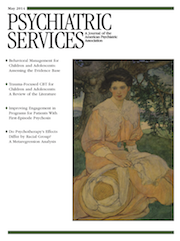Behavioral Management for Children and Adolescents: Assessing the Evidence
Abstract
Objective
Behavioral management services for children and adolescents are important components of the mental health service system. Behavioral management is a direct service designed to help develop or maintain prosocial behaviors in the home, school, or community. This review examined evidence for the effectiveness of family-centered, school-based, and integrated interventions.
Methods
Literature reviews and individual studies published from 1995 through 2012 were identified by searching PubMed, PsycINFO, Applied Social Sciences Index and Abstracts, Sociological Abstracts, Social Services Abstracts, Published International Literature on Traumatic Stress, the Educational Resources Information Center, and the Cumulative Index to Nursing and Allied Health Literature. Authors chose from three levels of evidence (high, moderate, and low) based on benchmarks for the number of studies and quality of their methodology. They also described the evidence of service effectiveness.
Results
The level of evidence for behavioral management was rated as high because of the number of well-designed randomized controlled trials across settings, particularly for family-centered and integrated family- and school-based interventions. Results for the effectiveness of behavioral management interventions were strong, depending on the type of intervention and mode of implementation. Evidence for school-based interventions as an isolated service was mixed, partly because complexities of evaluating group interventions in schools resulted in somewhat less rigor.
Conclusions
Behavioral management services should be considered for inclusion in covered plans. Further research addressing the mechanisms of effect and specific populations, particularly at the school level, will assist in bolstering the evidence base for this important category of clinical intervention.



